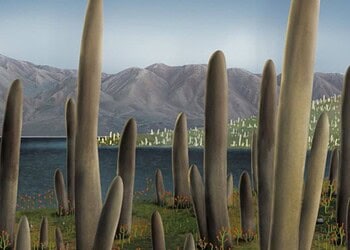Low-cost technologies could help researchers and city managers pinpoint the precise timing of key tree activities, like blooming or changing leaves. This could offer important information about tree health, which in turn could help us offer some much-needed protection to these trees.

Urban trees are very useful and we don’t give them enough credit. Not only do they regulate temperature and precipitation runoff, but they also clean our air, tackle erosion, and provide countless ecosystem services. Trees make our cities more pleasant and livable, and studies have calculated that in the US, a single tree provides the services of $73 worth of air conditioning, $75 worth of erosion control, $75 worth of wildlife shelter, and $50 worth of air pollution reduction.
But being a tree in the city is not easy. You’re often surrounded by concrete, the temperatures are hotter (due to the urban heat island effect), there’s pollution, and to top it all off, these pesky humans may decide to cut your branches (or even just cut you down) without warning. But researchers are now working on ways to improve the lives of city-dwelling trees.
“Accelerometers are in cars, smartphones and fitbits—they track movement in real time. When we put them on trees, accelerometers detect vibrations on the trunk as the tree sways in the wind,” said Deidre Jaeger, recently minted CIRES PhD researcher and lead author of the study out this week in Agricultural and Forest Meteorology. “That sway corresponds to the tree’s mass, which tells us what the tree is doing.”

A tree may seem static to the human eye, but a lot is happening beneath the surface. In addition to pulling CO2 out of the air and undergoing photosynthesis, a tree is also absorbing water and nutrients from the soil. Trees are constantly growing, and their growth depends on the water uptake throughout the season. This growth creates slight structural differences between seasons, and these differences can be detected by sensors.
“Think of the quick, shaky rattling sound of leafless trees in the dead of winter,” Jaeger said. “Now think of spring: the trees are lush with leaves, full of water, and sway with flexibility.”
The sensor in this case would be an accelerometer, a sensor used in navigation systems for decades. As the name implies, accelerometers measure acceleration, but in recent years, accelerometers have become so cheap and precise that they’re increasingly being used in other applications. Your phone also has one or several accelerometers — when you tilt your or move your phone, it can sense the movement through an accelerometer.
It’s not the first time trees have been equipped with accelerometers at all, and as funny as it sounds, measuring the “acceleration” of a tree can be very useful. For instance, previous studies were able to detect when trees’ leaf buds opened or when their leaves fell off, as well as other tree cycles. Now, Jaeger and colleagues have outfitted two white ash trees on the University of Colorado Boulder campus.
The method proved successful, which is especially notable because it was in a city — previous studies showed such methods work in more open spaces, but it was less clear whether the approach could work in an urban area which is more closed.
“Previous work suggested trees would need to be out in the open to have enough wind to sway, but we found it not only works on trees inside a city—it’s actually an ideal way to track urban tree growth,” said Jaeger.
The technique can be used for more than just urban trees, it could also be used in agriculture. For instance, it could offer clues about the tree cycles that are important economically or detect changes that are linked to pests, helping growers to respond to infestations quicker. Another application would be in climate studies.
“Now that we know accelerometers can determine flowering dates, that could be useful in agriculture, predicting when tree fruit may ripen or knowing when to apply interventions to protect tree buds from extreme weather,” Jaeger said.
“Trees are also bioindicators of climate change,” Jaeger said, “So having high-resolution, long-term accelerometer data would help scientists better anticipate how a changing climate will impact tree bloom, tree health and beyond.”
Ultimately, as the value of the trees becomes higher and higher (which seems to be the case in heavily urbanized environments), and as sensors become cheaper and cheaper, methods of monitoring tree health are becoming more and more attractive — not just from a scientific perspective, but also from an economic one.
We may soon enter an age where “Fitbits” won’t just be for humans or pets. They could be used for trees too.
The study was published in the journal Agricultural and Forest Meteorology.






